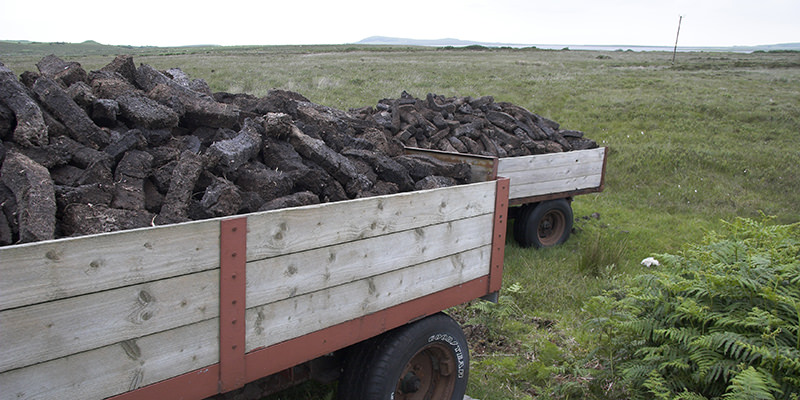Let’s be super real here. Peat is absolute funk. Like, Parliament Funk. Overly aged, particularly flavorful, insistently in-yo-face. That’s peat. You either love it or you hate it. Actually, that divisive thing shouldn’t really exist. Peat is a part of the many elements that go into making great Scotch. Peated Scotch. Which is, important to know, a very particular thing. So what in the living aged biomass is peat? (Yeah, we also thought we’d never say those words.)
Environmentally speaking, peat is a biomass material that’s unapologetically wasting away in the lower realms of normal human society — the environmental equivalent of Batman, something brooding in the depths of the world, developing a character we’re not really sure we’re ready for, but it’s definitely going to kick our ass. If you don’t love smoky Scotch we’re not saying you shouldn’t read on, since any whiskey/environmental savvy is good. But peat is most definitely a Scotch lover’s (or liker’s) buddy. And the reason is peat is a flavor bomb, something that’s generally smoked under a malted barley fire, entirely unsubtle. It’s the friend that shows up to the party and absolutely won’t shut up, but you kind of love her.
If you’re also an archaeology fan, peat is kind of your game. Peat is basically a midway fossil — a bunch of plant material that’s supersaturated with water and that also has zero access to oxygen. It’s also known as “humus” but not the kind you can dip pita chips or, if you’re being good, carrot sticks, into. Peat occurs specifically in northern climates (like Scotland) because plant material can’t be broken down as quickly by microbes, so it’s left to get all funky and rich in the ground.
So what goes into peat? Mostly moss and grass, heavily saturated with water that may or may not contain different quantities of minerals and vegetal flavors. When Scotch is “peated,” it basically means that the malted barley is roasted over a flame of peat, which tends to yield the vegetal, briny, and/or generally unapologetically smoky element in your high-priced booze. And while that’s a particularly divisive flavor, it’s also something that’s so incredibly in demand that’s it’s actually deplenishing the world of gooey, dark, rich peat reserves.
If you’re not a peat fan, you know it already. If you have no idea what peat is, you’d do well to explore some peat-heavy Scotches, and then tell your friends you’re not only observant of the environment, you drink it.

